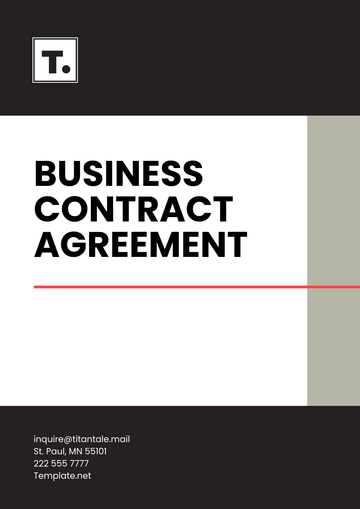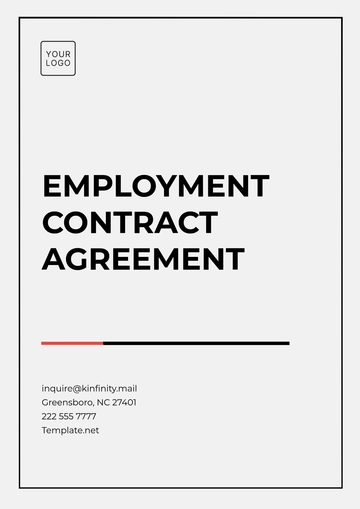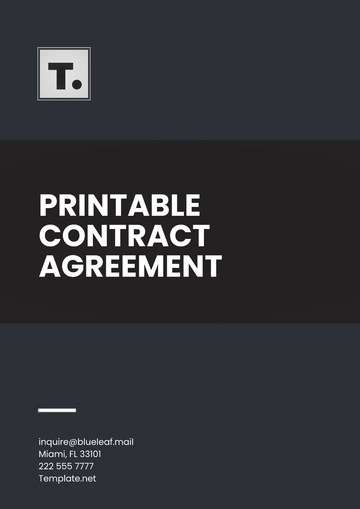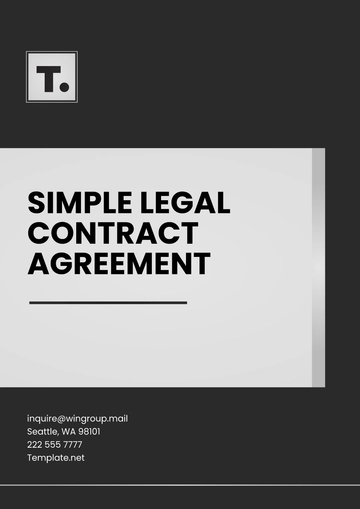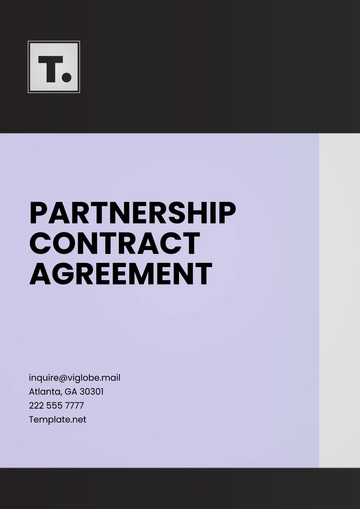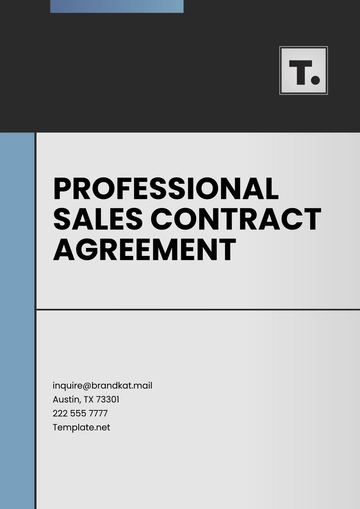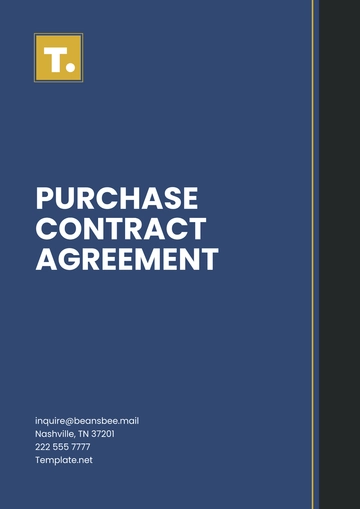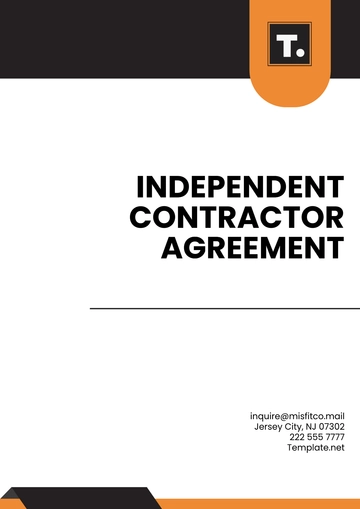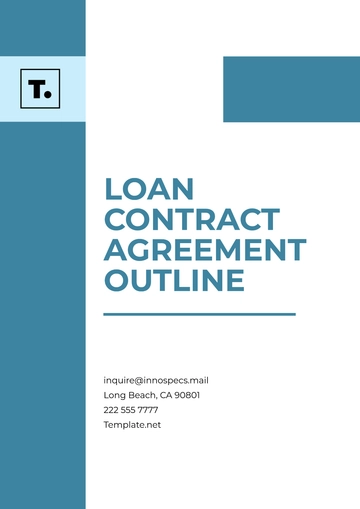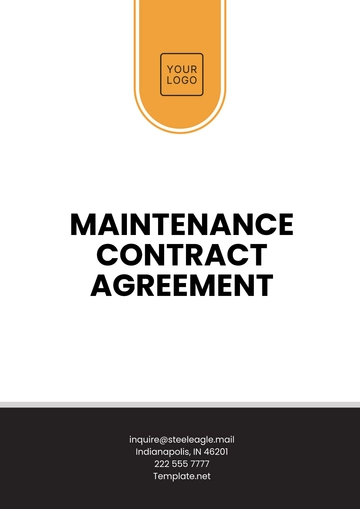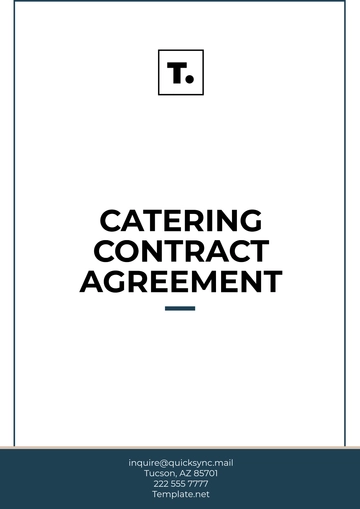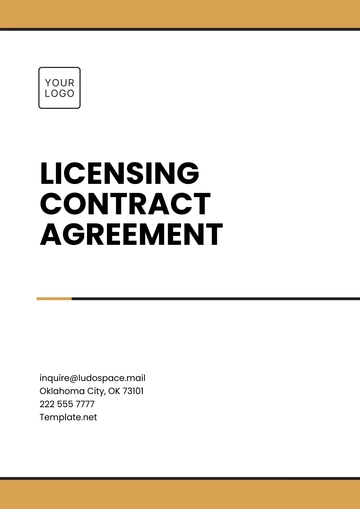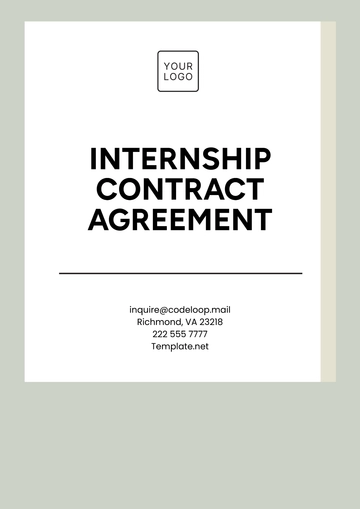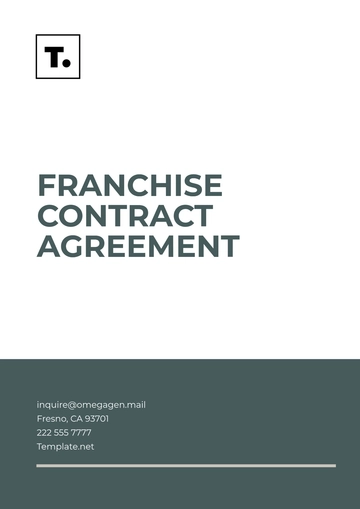Free Sales Manual on Contract Creation
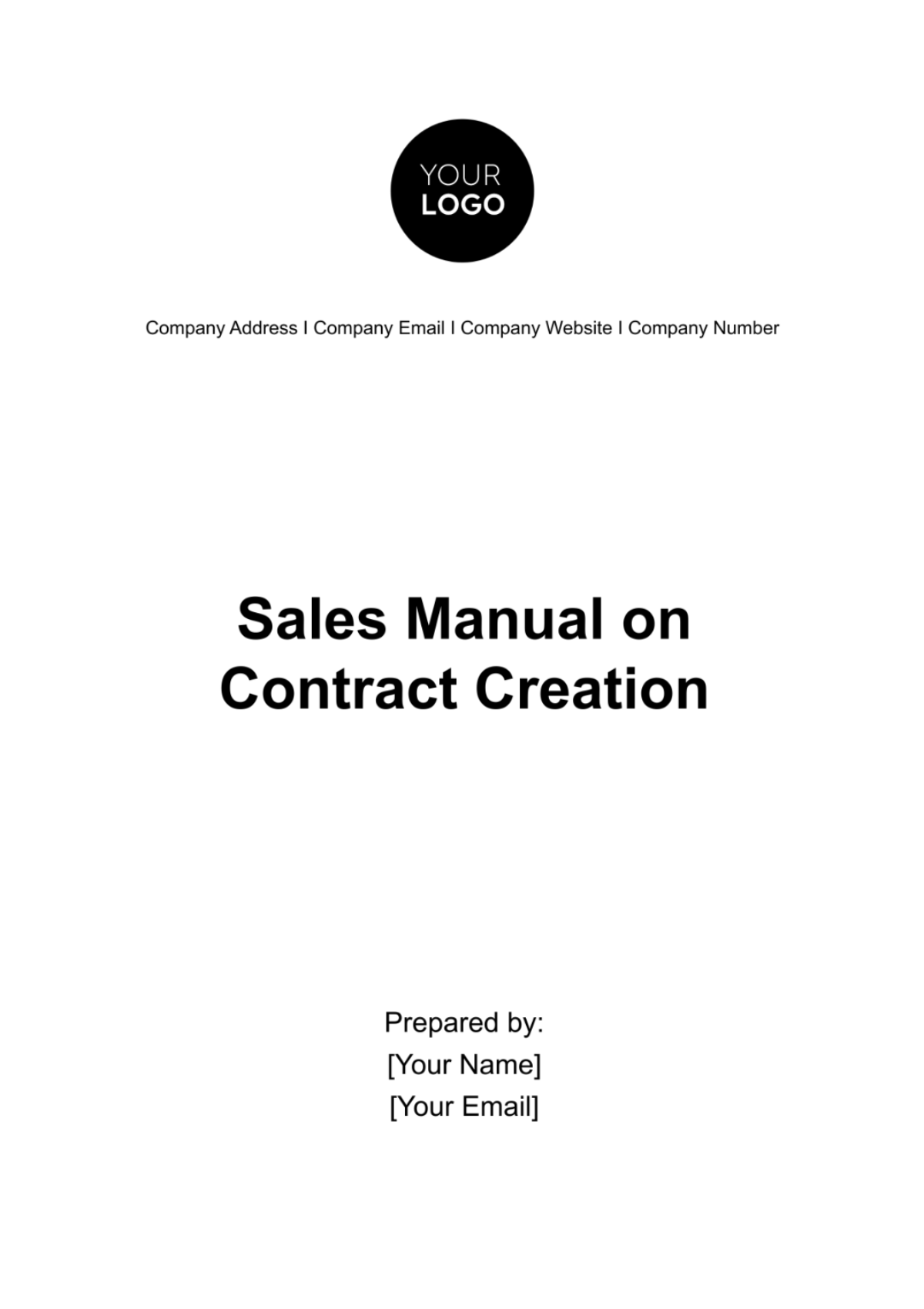
I. Introduction
A. Purpose of the Sales Manual
The Sales Manual on Contract Creation is designed to provide our sales professionals with the knowledge and tools they need to create and manage contracts effectively. It aims to streamline the contract creation process, enhance compliance, and reduce risks.
B. Target Audience
This manual is intended for all sales team members who are involved in the contract creation process, including sales representatives, sales managers, and contract administrators.
II. Legal and Compliance Framework
Sales professionals must be aware of and comply with these laws and regulations, including contract law, data protection regulations, and industry-specific requirements. It's essential to stay informed about legal changes that could affect our contracts.
Contract Law
Commercial Law
Corporate Law
Regulatory Compliance
Antitrust and Competition Law
Intellectual Property Law
Employment Law
Data Protection and Privacy Law
Environmental Law
International Law
III. Types of Contracts
Sales Agreements
Sales agreements outline the terms and conditions under which a sale of products or services will take place. These may include pricing, payment terms, delivery, and warranties.
Service Contracts
Service contracts define the scope of services to be provided, duration, service levels, and terms of payment. These are essential for service-based offerings.
Purchase Orders
Purchase orders are often initiated by customers and provide a written request to buy products or services. Sales professionals should understand how to respond to and process purchase orders.
IV. Contract Creation Process
Step 1: Drafting the Contract
When drafting a contract, pay careful attention to detail. Ensure that all terms and conditions are clearly defined, and use plain language to enhance understanding.
Step 2: Reviewing and Editing
A thorough review of the contract is essential. This stage may involve multiple revisions to ensure accuracy and compliance. Legal counsel or contract administrators may be involved.
Step 3: Finalizing the Contract
Finalizing the contract includes obtaining necessary approvals and signatures, sending the contract to the client, and ensuring that all parties have a fully executed copy.
V. Contract Review and Approval
Preparation: Gather all relevant documents and information related to the contract, including previous correspondence, negotiation points, and legal requirements.
Review Team Formation: Assemble a review team comprising individuals with expertise in relevant areas such as legal, finance, operations, and compliance. Assign specific responsibilities to each team member based on their expertise.
Initial Review: Conduct an initial review of the contract to identify key terms, obligations, and potential risks. Highlight any areas that require further scrutiny or clarification.
Legal Analysis: Engage legal counsel to conduct a thorough legal analysis of the contract, focusing on compliance with applicable laws and regulations, enforceability of terms, and risk mitigation strategies.
Financial Assessment: Assess the financial implications of the contract, including pricing, payment terms, and potential revenue or cost implications. Ensure alignment with financial objectives and risk tolerance.
Operational Impact: Evaluate the operational impact of the contract on existing processes, resources, and timelines. Identify any operational constraints or requirements that need to be addressed.
Risk Identification: Identify and assess potential risks associated with the contract, including financial, legal, operational, and reputational risks. Prioritize risks based on their likelihood and potential impact on the organization.
Mitigation Strategies: Develop mitigation strategies to address identified risks, such as adding specific clauses, negotiating terms, or obtaining insurance coverage. Ensure that mitigation strategies are practical and aligned with organizational objectives.
Negotiation: Engage in negotiations with the other party to resolve any outstanding issues or concerns and finalize contract terms. Maintain clear communication and focus on achieving mutually beneficial outcomes.
Final Review: Conduct a final review of the contract to ensure that all negotiated changes and amendments are accurately reflected. Verify that the contract aligns with organizational policies, objectives, and risk tolerance.
Approval Process: Obtain approval from relevant stakeholders, such as senior management, legal counsel, and finance, before finalizing the contract. Ensure that all approvals are documented and recorded for future reference.
Execution: Once approved, execute the contract according to the agreed-upon terms and conditions. Ensure that all parties involved understand their obligations and responsibilities under the contract.
Post-Execution Monitoring: Establish mechanisms for post-execution monitoring of contract performance, including regular reviews, milestone tracking, and performance metrics. Address any issues or deviations from the contract promptly to prevent escalation.
VI. Client Communication
Active Listening: Listen attentively to the client's concerns without interruption, allowing them to express their worries fully. Understanding their perspective is crucial in addressing their concerns effectively.
Clarification: Clarify any misunderstandings or confusion about contract provisions by providing clear explanations. Break down complex terms into simple language to ensure the client fully comprehends the implications.
Empathy: Show empathy towards the client's concerns and acknowledge their perspective. Validate their feelings and reassure them that their concerns are being taken seriously.
Problem-Solving: Work collaboratively with the client to find mutually beneficial solutions to address their concerns. Offer alternative options or compromises where feasible to accommodate their needs without compromising the organization's interests.
Transparency: Be transparent about the rationale behind specific contract provisions and how they benefit both parties. Transparency builds trust and confidence in the business relationship.
Expertise: Demonstrate expertise in the subject matter by providing relevant information or examples to support your explanations. Clients are more likely to trust and accept your recommendations when they perceive you as knowledgeable and credible.
Flexibility: Be flexible and open to making reasonable adjustments to the contract provisions if necessary to alleviate the client's concerns. Flexibility demonstrates a willingness to accommodate their needs and maintain a positive relationship.
Timely Communication: Address client concerns promptly and proactively to prevent them from escalating into larger issues. Keep the client informed about the progress of resolving their concerns and provide regular updates as needed.
Follow-Up: Follow up with the client after addressing their concerns to ensure they are satisfied with the resolution. Reiterate your commitment to their satisfaction and offer ongoing support as needed throughout the duration of the contract.
Documentation: Document any changes or agreements made to address client concerns and ensure they are accurately reflected in the contract. Clear documentation helps prevent future misunderstandings and provides a reference point for both parties.
VII. Risk Management
A. Identifying Contract Risks
Sales professionals should be vigilant in identifying potential risks associated with contract terms, such as financial liabilities, deliverables, and compliance. Here's a straightforward and comprehensive approach to identify contract risks:
Comprehensive Review: Conduct a thorough review of contract terms, paying close attention to financial obligations, deliverables, and compliance requirements.
Risk Assessment: Evaluate the probability and potential impact of identified risks on the organization, considering factors such as financial loss, reputation damage, and operational disruptions.
Holistic Perspective: Take a holistic view of the contract, considering both internal and external factors that may affect its performance and outcomes.
Proactive Approach: Anticipate potential risks and issues before they arise, enabling proactive mitigation strategies and contingency planning.
Continuous Monitoring: Implement mechanisms for ongoing monitoring of contract performance and compliance to identify and address emerging risks promptly.
B. Mitigation Strategies
Contingency Planning: Develop contingency plans for potential risks identified in the contract. These plans should outline specific actions to be taken if certain risks materialize, including alternative approaches, resource reallocation, or escalation procedures.
Contract Review Process: Implement a thorough contract review process involving cross-functional teams, including legal, finance, and operations, to ensure all aspects of the contract are thoroughly examined for potential risks and compliance issues.
Risk Allocation Mechanisms: Utilize risk allocation mechanisms such as indemnification clauses, insurance coverage, or performance guarantees to allocate risks appropriately between parties and protect against financial losses.
Continuous Monitoring: Establish mechanisms for continuous monitoring of contract performance and compliance throughout the duration of the agreement. This may involve regular check-ins, progress reports, or audits to identify and address any emerging risks promptly.
Stakeholder Communication: Foster open and transparent communication with stakeholders, including clients, vendors, and internal teams, to ensure everyone is aware of potential risks and mitigation strategies. Encourage proactive reporting of issues or concerns to facilitate early intervention.
Legal Expertise: Involve legal experts or contract specialists in the negotiation and drafting of high-risk contracts. Their expertise can help identify potential pitfalls and ensure that contractual terms are legally enforceable and in the organization's best interest.
Risk Transfer Mechanisms: Consider risk transfer mechanisms such as subcontracting, joint ventures, or partnerships to share or transfer certain risks to other parties with the expertise or capacity to manage them effectively.
Documentation and Record-Keeping: Maintain comprehensive documentation of contract negotiations, amendments, and any changes to terms or conditions throughout the contract lifecycle. This documentation serves as a reference point in case of disputes and helps track the implementation of mitigation strategies.
Training and Awareness: Provide training and awareness programs to educate sales professionals and other stakeholders about contract risks, mitigation strategies, and their roles and responsibilities in managing contractual obligations effectively.
VIII. Conclusions
In conclusion, the Sales Manual on Contract Creation serves as a comprehensive guide for sales professionals, providing them with the necessary knowledge and tools to effectively create, manage, and mitigate risks associated with contracts.
By understanding the legal and compliance framework, types of contracts, and the contract creation process, sales professionals can streamline operations, enhance compliance, and mitigate potential risks. Moreover, through effective client communication and risk management strategies, organizations can foster positive business relationships, minimize disputes, and achieve mutually beneficial outcomes.
IX. Appendix
Sample Contract Clauses
Glossary of Legal Terms
Relevant Legal Citations
- 100% Customizable, free editor
- Access 1 Million+ Templates, photo’s & graphics
- Download or share as a template
- Click and replace photos, graphics, text, backgrounds
- Resize, crop, AI write & more
- Access advanced editor
Create impeccable contracts with this editable Sales Manual on Contract Creation Template from Template.net. Customizable in our AI Editor Tool, it provides your sales team with in-depth instructions for crafting contracts that meet industry standards and best practices. From structuring agreements to legal compliance, this manual ensures that your contracts are accurate, reliable, and aligned with your organization's goals and values.
You may also like
- Rental Contract
- Contractor Contract
- Contract Agreement
- One Page Contract
- School Contract
- Social Media Contract
- Service Contract
- Business Contract
- Restaurant Contract
- Marketing Contract
- Real Estate Contract
- IT Contract
- Cleaning Contract
- Property Contract
- Supplier Contract
- Partnership Contract
- Food Business Contract
- Construction Contract
- Employment Contract
- Investment Contract
- Project Contract
- Payment Contract
- Student Contract
- Travel Agency Contract
- Startup Contract
- Annual Maintenance Contract
- Employee Contract
- Gym Contract
- Event Planning Contract
- Personal Contract
- Nursing Home Contract
- Law Firm Contract
- Work from Home Contract
- Software Development Contract
- Maintenance Contract
- Music Contract
- Amendment Contract
- Band Contract
- DJ Contract
- University Contract
- Salon Contract
- Renovation Contract
- Photography Contract
- Lawn Care Contract

